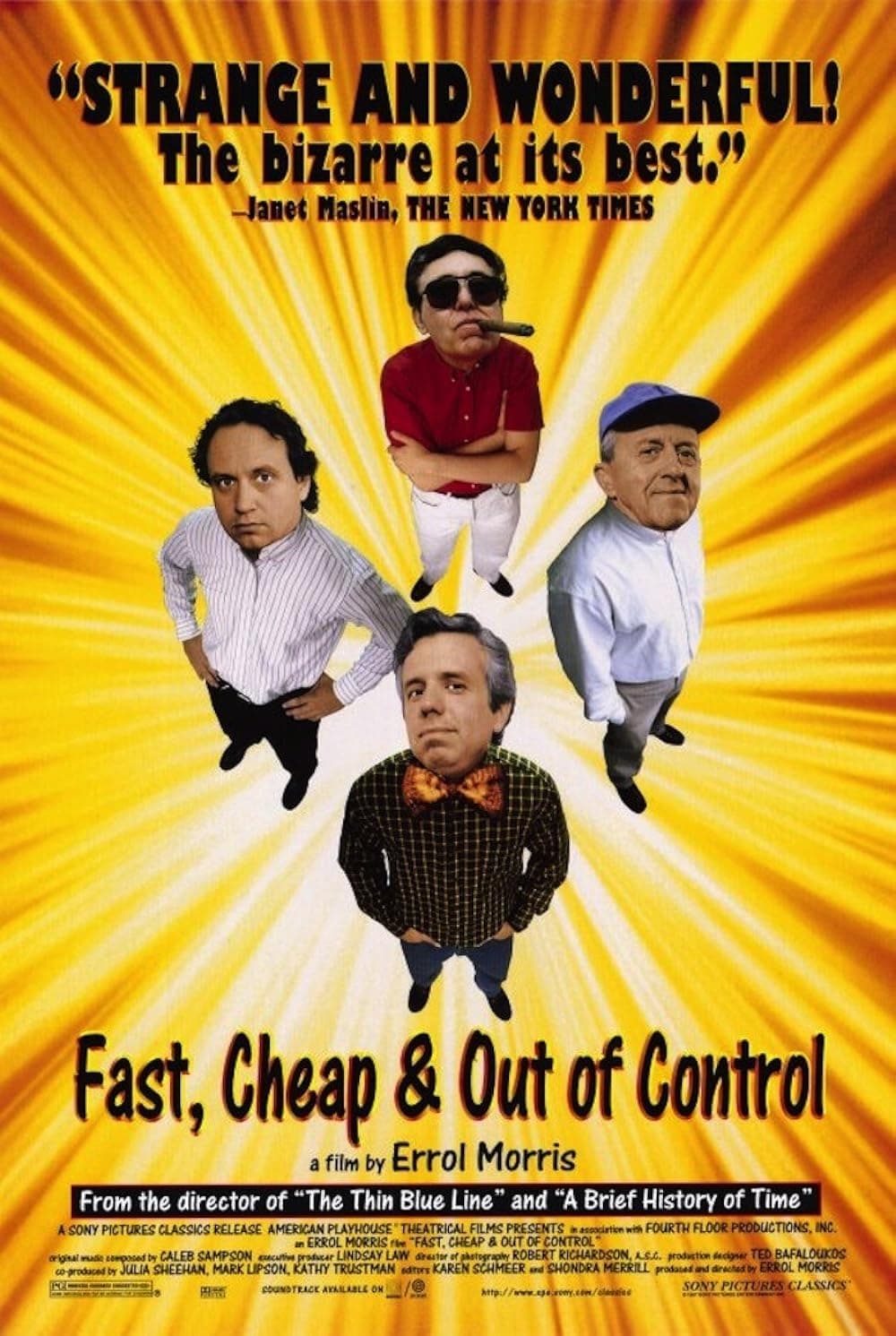
Errol Morris’s Fast, Cheap & Out of Control interweaves the stories of four men, each driven to create eccentric worlds from their unique obsessions, all of which involve animals. There’s a lion tamer who shares his theories on the mental processes of wild animals; a topiary gardener who has devoted a lifetime to shaping bears and giraffes out of hedges and trees; a man fascinated with hairless mole rats; and an MIT scientist who has designed complex, autonomous robots that can crawl like bugs.
28 Nov Fast, Cheap and Out of Control (1997)
Architecture Machine
My small survey of documentary types has brought me to this, and what a celebration!
This is complex, meaningful cinema that just happens to be a documentary. It is intelligent, complex, deliberate and deeply thought provoking. I think it communicates something that isn’t quite right, but the thing is communicated in the most effective way — by folding the idea being explained into the form of the explanation, the film itself.
The core of this is the work of Rodney Brooks. He is a celebrated researcher in robotics and now the founder of the most promising company making these things. He is smart, articulate and the things he makes work as advertised. I’ve encountered him and his work professionally over the last 30 years. He makes machines that walk, and have some cognitive navigation skills. Walking is hard.
While there are many research centres working on robotics, there are only two universities working on the underlying theories. MIT is the least shallow of these. Add in the fact that Brooks has manufactured thousands of graduates in his style of thinking, and you may appreciate why he may be one of the most influential thinkers on the planet.
The theory here is that instead of thinking about a single brain, it makes sense to think in terms of a society of collaborating miniminds, agents. As a metaphor, bees, ants, termites are usual. And as usual, the metaphor in most quarters is taken too literally. Brooks does not quite do so, but this is the first compromise made by the filmmaker. Making agents systems that have the behaviour you want is impossible without some structure in the society. A promising approach is to go deep and restructure logic. Instead, Brooks structures the agents into “subsumptive” layers. This mirrors special purpose roles of termites and molerats in colonies.
Okay, here is an idea, an interesting one, and one that is already embedded in the general intellectual economy. Around this, Morris builds a film. Nominally, there are four “geniuses.” One is our robotics theorist. We have an obsessive expert in molerats, so we have our metaphor made whole. We have a lion tamer. Now he fits into the idea architecture by explaining how he repeatedly risks his life to figure out and superficially control inscrutable animals. And finally we have a guy who reverses the metaphor; he takes living things with their natural agent system that wants to behave one way, and he forces it to look like larger living things. The resemblance is superficial and fragile.
Two of these form the cinematic spine: the circus and the robots. Most of what we see apart from the four individuals themselves is a collage of circus footage and splices from old robot movies. We also have the synthesis of old “circus” movies with robotic influence.
Peppered in are the two other guys and their cinematic expression. With the molerats, we have — well, a film of molerats. With the topiarist, we have some artistically photographed scenes of him working in the garden. The score is important in Morris films; here the composer tries to build subsumptive music, taking themes from movies and other recognisable sources, assigning them to types of clips we see, and subsuming them into a klezmer-inspired circus score where we are the audience.
This really is a carefully structured piece of cinema, visually conveying ideas much deeper than one normally allows.
The problem is that like the four men we are shown, the approach is still discrete, reductionist. It assumes that great sweeps of life can be logical, explained. We go to the circus and topiary garden to see this narrative. An influential professor treats grad students like so many ants, incrementally evolving “the system.” A fellow “explains” the colony, as if observations equals insights.
So here is the quandary with film and ideas. Film is about showing. The best ideas are about abstracting away distracting (and often false) appearances. A long form narrative film takes you places where you can invent your insights, with some guidance. A documentary feeds insights, but has to stick more with the “sight” than the “in”.
Still, the structure here and the ambition! It isn’t real, but it does not have to be to warm us.
Posted in 2010
Ted’s Evaluation — 3 of 3: Worth watching.


No Comments